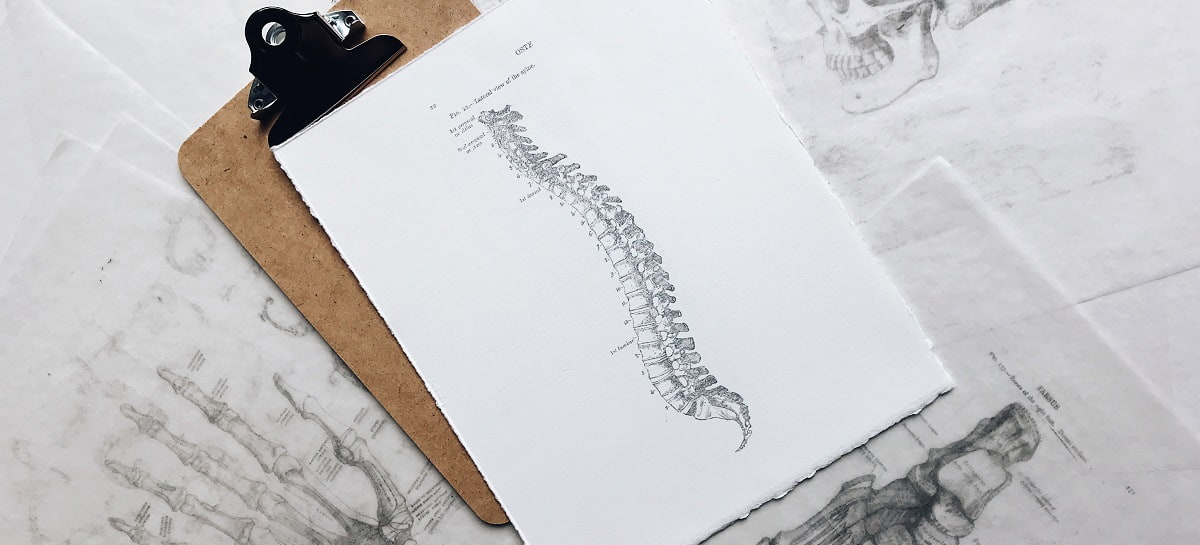If you are one of the 16 million adults who suffer from back pain, you might be wondering how to fix bad posture. Even if you don’t have back pain, learning how to correct your posture can prevent a lot of future health conditions and issues, such as muscle tension.
Maintaining proper posture is especially important if you are a student or have an office job that involves a lot of sitting. The earlier you start correcting your posture, the fewer problems you will have later on.
Our guide to good posture includes plenty of stretches and exercises to fix and prevent any health problems and pain you may get from a poor sitting position. And, you can learn with videos taught by wellness professionals as we go!

Want to Improve Yourself Each Day?
Sign up to Goodwall!
- Connect with improvement-focused people from 150+ countries
- Build valuable skills and experience
- Ask questions and get support when you need it
Download the app now to get started for FREE!
Here are 10 exercises for learning how to improve posture:
1. The Dead Bug
To do this bodyweight exercise, you will need to lie on the floor on your back. Extend your arms straight towards the ceiling and pull your knees directly over your hips. They should be at a 90-degree angle.
Now slowly lower your right arm until it is beside your ear and simultaneously lower your left leg until it is straight. Both should be just a few inches off the floor. Hold this position for a second and slowly repeat it with the other arm and leg, focusing on using your core and glute muscles.
This exercise works all of your abdominal muscles and your glutes, and can also stabilize your spine. It also involves hip and shoulder mobility. Strengthening all of these core muscles will help you have good posture.
2. Goalpost Squeezes
You can do this exercise either seated on the edge of a chair or while standing. Put your arms out with your elbows bent at 90-degree angles and your hands pointing upward, as if imitating a goal post.
Next, slowly pull your arms back while maintaining the same shape. Relax your shoulders and focus on pulling your elbows as far back as possible. Pretend you are squeezing something between your shoulder blades, and repeat this movement ten times.
This exercise can help relax your shoulders and strengthen your upper back. If you store stress in your neck and shoulders, this is a good way to loosen that up. And speaking of stress, improving your work-life balance can also improve your pain!
3. Dumbbell Halo
For this exercise, get down on your knees and take a dumbbell and hold it horizontally at chest level with one hand on each end. Raise the dumbbell to your eye level and slowly circle the dumbbell around your head, as if drawing a halo. Then repeat this motion in the opposite direction.
It is important to keep your back straight while doing this exercise. This correct position will improve your spinal stability as your back fights the urge to twist with the motion of your shoulders. It will also work your ab muscles, increasing your ability to maintain correct posture and avoid unnecessary problems.
4. Standing Decompression
You will need to find a surface to hold on to for this standing posture exercise. Your kitchen sink works great for this. Hold on to the edge and slowly lean back while keeping your legs straight until your arms are also fully extended.
You can repeat this exercise multiple times as needed for back pain. Hold it for about 30 seconds at a time, while concentrating on taking deep breaths. This stretch can provide pain relief, relieve pressure on your spinal nerves, and help align your spine.
5. Bent-Over Rowing
You will need to get two dumbbells for this exercise and hold one in each hand at your sides. Stand with your legs hip-width apart and lean forward at the hips with your knees slightly bent, taking care not to maintain a flat back without rounding your shoulders. Look at the ground about a foot in front of you so your neck is in a relaxed position.
Now pull the weights to your chest while tightening your shoulders. Hold this position for two seconds while squeezing your shoulders before slowly lowering the weights back to your sides. Repeat this motion 8-10 times.
This exercise helps your posture by strengthening muscles in your neck, upper back, and shoulders that are needed for maintaining good posture. The more you work these muscles, the easier it will be to naturally fix your poor posture.
6. Forward Fold
To do this exercise, get into a standing position with your feet flat and slightly apart. Then, place your hands on your hips, and slowly lean forward at the hips while extending your arms towards the ground. You can place your hands on the floor or on your legs, whichever feels more comfortable.
Bend your knees slightly and allow gravity to extend your back. Tuck your chin to your chest and let your head fall down as far as possible. Stay in this pose for up to one minute, and try to relax into it as much as possible.
This exercise will elongate your spine and also relax your hamstrings, spine, and glute muscles while also stretching your hips and legs. It will also help you align your spine, automatically improving your posture. If you’re struggling to fit poor posture exercises like these into your routine, try these time management tips to help.
7. Plank
Holding a high plank is another good way to improve your posture. To do this exercise, get down on your hands and knees and then straighten your legs, resting part of your weight on your toes. Make sure your shoulders are directly over your hands and keep your head and neck straight.
Focus on engaging your core while you maintain this pose. Breathe normally and remember not to drop your head or to let your shoulders go behind your hands. Hold this for 30 seconds to one minute, or start with smaller increments and work your way up. Try to keep an overall body awareness to ensure you keep yourself level.
Planks are a fantastic way to strengthen your core and back muscles, which are essential to correct posture, avoiding joint pain, and maintaining a proper alignment of your spine. It also strengthens your shoulders and hamstrings and can improve your balance, along with other benefits.
8. Farmer Carry
You will need to get two dumbbells for this exercise and place one on each side of your feet. When you are ready to begin, squat down and grab one weight with each hand. Stand up slowly, making sure your chest does not lean forward and that your back remains straight.
Now walk forward for about 50 feet, or if you have a smaller space you can pace back and forth. Focus on using your ab muscles as you do this, and pretend there is a string pulling you up from the top of your head, elongating your back and engaging your core.
The benefit of this exercise is that it trains you to maintain an upright posture even when walking or lifting things. This will create muscle memory and cause your body to automatically fix your posture if done often enough.
9. Bird Dog
To begin this exercise, get down on your hands and knees. Your hips should be directly over your knees and your shoulders directly over your hands. Focus on keeping your back flat and your head parallel to the floor.
Once you are in position, slowly extend one leg behind you in the air while simultaneously picking up the opposite arm and extending it until it is straight and covering your ear. Squeeze your core muscles as you carefully lower your arm and leg, and then repeat with the opposite arm and leg.
This exercise mostly targets your core but also can improve balance and involves muscles deep in your lower back and glutes. It will also improve pelvic stability.
10. Kneeling Glute Hinge
For this exercise, you’ll need to grab a dumbbell and kneel on a mat or other surface. Your body should make one straight line from your head to your knees as you kneel. Clutch the dumbbell to your chest and hold it vertically with both hands.
Next, slowly lower your glutes until you are sitting on your heels. Your torso should hinge forward ever so slightly when doing this. Squeeze your glutes as much as possible as you slowly lift back to the starting position, and then hold for two seconds before beginning the next rep.
This exercise can be particularly helpful because it forces your core muscles to fight against the force of gravity on your spine. This will not only give you better posture, but can also give you the proper technique for other exercises, such as squats and deadlifts.

Want to Improve Yourself Each Day?
Sign up to Goodwall!
- Connect with improvement-focused people from 150+ countries
- Build valuable skills and experience
- Ask questions and get support when you need it
Download the app now to get started for FREE!
What to Expect
This guide to good posture is just the beginning, of course.
As you start trying new exercises and stretches to improve your posture, what can you expect? First, you can expect to see a lot of muscle development, especially in your core and back. This is a sure sign of improvement, as most bad posture is due to weak core muscles.
You will also start to reap some of the benefits of having correct posture. These can include less back pain and headaches, more self-confidence, improved mood, and better breathing and digestion.
Final Thoughts on How to Improve Posture
The hardest part when trying to figure out how to improve your posture is simply getting started. However, just taking a few minutes out of your day to try some of these exercises can fix your posture and provide you with other health benefits.
For more information, advice, and tips on self-improvement, career, education, and entrepreneurship, be sure to check out the rest of our blog! With all of the new content being constantly added, we are sure to have something helpful for you.











